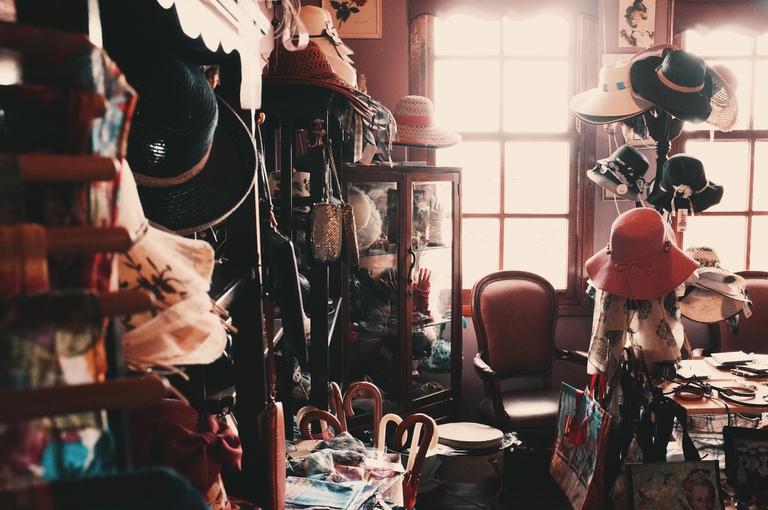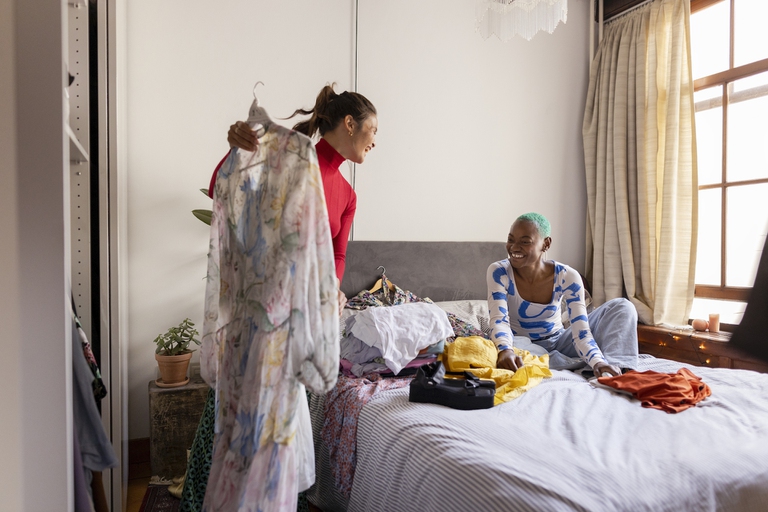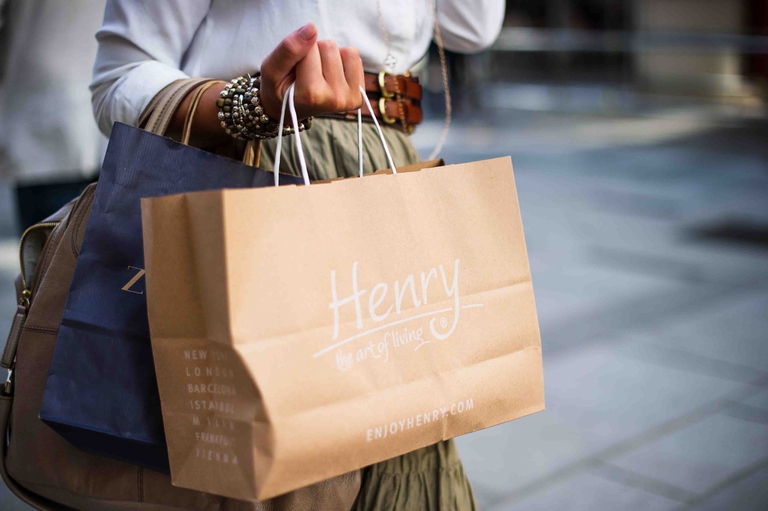https://www.lifegate.it/mercato-second-hand
- |
The second hand market is exploding.With growth three times higher than that of the normal clothing market, it is estimated that it can reach one growth of 217 percent by 2026, reaching the figure of in the United States alone 82 billion dollars.We are experiencing the peak of growth right now:the year that is coming to an end is the one that saw us making purchases in the second-hand market with an increase of 24 percent.But what are the factors behind this exponential and continuous growth?
ThredUP is an online used clothing retailer that has been monitoring the resale sector and which annually produces the Resale Report in which the state of the second hand sector is summarized, the dynamics are analyzed and the projections for the future.
Second hand growth factors
Between 2020 and 2021, used clothing retailers went from 8 to 30:this means, in percentage terms, an increase of 275 percent.Such vertical growth cannot be the result of chance, but is symptomatic of a change of perspective and consumer habits.A positive signal with enormous benefits for the planet and for a more ethical and sustainable fashion sector.
Finally, perhaps, the collective power of conscious consumers he was able to influence and hijack the fashion industry, but not only that.It plays an important role in this sense from technology and online marketplaces, which have led to a widespread and widespread diffusion of second-hand clothing throughout the territory.
In fact, it is estimated that by 2024 half of the purchases in terms of vintage they will come from e-commerce sites.A figure that is not surprising, especially when compared to the fact that 70 percent of consumers say that buying second hand today is easier than 5 years ago, thanks to dedicated apps and sites.
Furthermore, industry players such as Vinted or Vestiaire Collective, not only have they made it easier to sell and buy used goods, but also trendy.Raise your hand if, in times of pandemic, you haven't started to do a bit of decluttering of your wardrobe and wondered how the heck to get rid of items bought in other eras of life and now forgotten. Vinted made this process incredibly smooth:you photograph the items you want to sell, you set a price, you wait for someone to buy, or raise with another price, and then you send it.
A thrift shop within reach of your palm and connections that does not require a specific selection of brands, you can sell anything, from fast fashion to famous brands up to the sweater made by your grandmother.

But if Vinted moves on a range of products that are not excessively expensive, a platform like Vestiaire Collective had the great merit of exporting second hand on a large scale in luxury sector.Coining terms like “pre-loved” or “fashion activist” had the great merit of clear customs for the purchase of used clothing among a public less inclined to make second-hand purchases.High-end second-hand boutiques have always existed, of course, but they weren't as global and easy to navigate.
Overall, during 2021, they were 244 million consumers who said they had bought or were open to shopping for second hand products, with an increase of 7 percent compared to 2020.Good news for the environment:the billion purchases of used clothes or accessories made during the year are one billion fewer purchases on the new market.This means that almost two out of three consumers believe that their actions can have a positive impact on the environment.
A change of perspective
The second hand sector is weighing more on total purchases in the clothing sector than all the other channels combined.81 percent of first-time second-hand shoppers expect to spend the same amount or more over the next 5 years.A figure also strengthened by the fact that 41 percent of consumers say that when it comes to clothing, second hand is the first option he takes into consideration and that 46 percent of those belonging to the gods Gen Z And Millennials, Before making a purchase, also take into consideration its possible value in the resale market.

The fact is that more and more people, if questioned about the sustainability of their purchasing choices, judges more favorably to buy something that already exists rather than choosing a brand whose products are eco-friendly but new.
Vintage and second-hand goods are seen as more accessible and inclusive than sustainable brands which are usually much more expensive and do not always manage to gain the trust of potential buyers.For 37 percent of those interviewed by ThredUP, those who approach a sustainable brand have doubts that it could be greenwashing.The fact that there is a more varied range of sizes available in second-hand shops means that 1 in 4 shoppers feel more represented and encouraged to look for other items in their size.
The identikit of those who buy in thrift shops
Many of those who buy used today are gods “repent of fast fashion” that is, people who, in 50 percent of cases, are convinced that the fast fashion business model is harmful, but then buy it because it is more convenient in terms of money (74 percent) or time (53 percent) .Despite being convinced that fast fashion leads us to buy things we don't have the slightest need for (62 percent), most consumers find it extremely difficult to abandon compulsive shopping (59 percent).Furthermore, 1 in 5 respondents said they feel driven to always make new purchases from social pressure, especially from the need to have something new from show on social media.
In fact, since fast fashion spread, that is, around the 2000s, the consumption of clothes has increased dramatically, reaching the astronomical figure of 17 million tons of clothes produced every year on this planet. Such a quantity that we are unable to buy or wear and which only uses up the planet's already scarce resources and leaves behind a lot of textile waste in exchange.It goes without saying that second hand is a more than sensible path to follow for those who care about the fate of the environment, who in one fell swoop save money and avoid encouraging textile production, which has now reached unsustainable quantities.

When you have infinite options, often very cheap, like those offered by vai Shein o Zaful, it is not easy to take other paths, but the fact that it is the same consumer mentality to change It's a notable step forward.However, it is essential that a hyper-consumeristic approach is eradicated even when it comes to second hand.The fact that these products already exist should not become an impulse to purchase, but rather an awareness of the problem.
With his 75 million registered members, distributed in 18 markets between Europe and North America, Vinted sees the presence of on its platform 550 million items globally. A gigantic figure in itself, which however sees the alignment of another phenomenon, which makes it less worrying.According to what was declared by the Lithuanian company, in fact, a particularly significant portion of the members tends to both sell and buy, closing the circle and creating a virtuous circle.
Resale, lights and shadows
Buying used clothes and accessories is currently at the top of the list of best behaviors that we as consumers can adopt for the good of our planet.However, this works if two phenomena do not occur:that is, the fact that the lower cost of second hand is nothing but another shopping catalyst, and which does not encourage the chasing of passing fads with the idea that the clothes or accessories purchased can easily be sold with a click.
Buying with the idea that it is not aimpactful action because it's used, or experimenting with all the current trends with the idea that these items can then be resold and already thinking about how much you can earn from them is not even remotely virtuous behavior.Therefore, responsibility is also needed on the part of the major players in the sector.

And transport?How much impact do they have? shipments on the global impact of clothes?If compared to those needed to make a garment from scratch, do they still represent the least polluting choice?Apparently yes.In his first Impact report, Vestiaire Collective demonstrated how 70 percent of purchases made via the app made it possible to avoid a first-hand purchase for an equivalent amount of approximately 40 thousand tons of CO2 without using additional compensation.
But how did we arrive at this result?The company collected data on all types of emissions by first calculating the own carbon footprint on the platform Aktio and by collecting greenhouse gas emissions figures directly from its suppliers (e.g. carriers), and then measuring them avoided emissions comparing, for example, the rate of travel and calculating the emissions associated with the reference scenario based on data from Product environmental footprint (PEF) of the European Commission onimpact of life cycle assessment of clothing and footwear.
One of the most impactful steps, in terms of emissions, for example, consists of control and sorting centers. By switching to direct shipping, in 65 percent of cases, the distance that an item must travel to go from the seller to the buyer is halved, but also by cutting air transport, a choice that the company made for the 62 percent of its transactions.In short:second hand yes, but not if this means shopping done uncritically.
